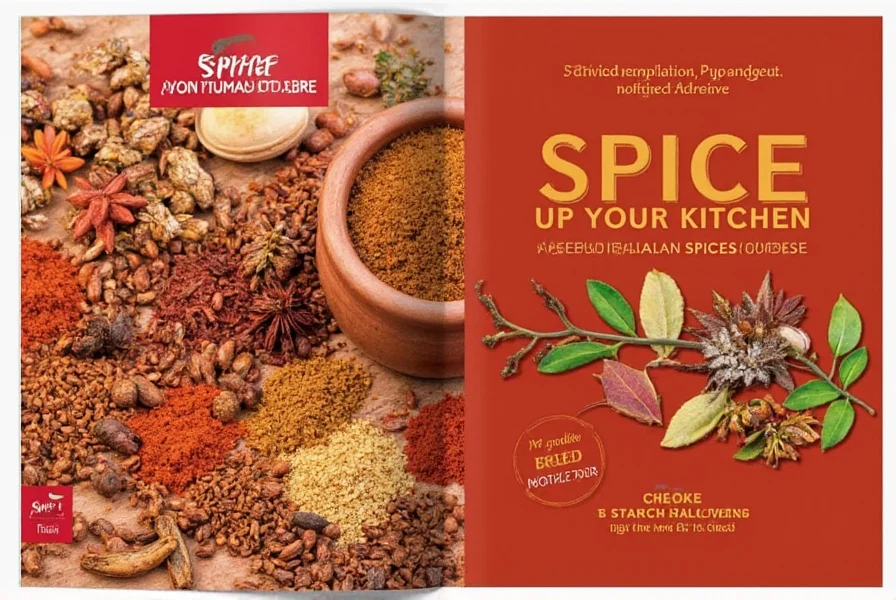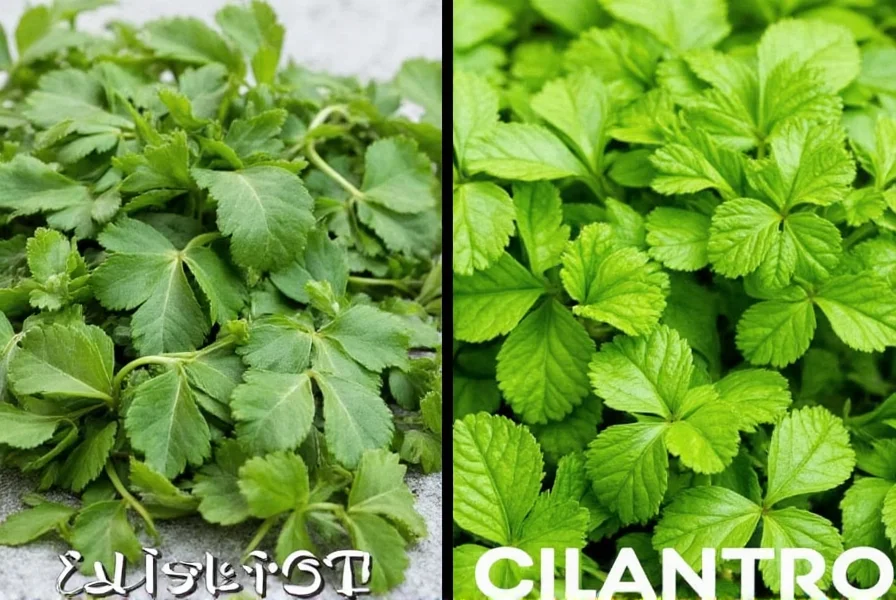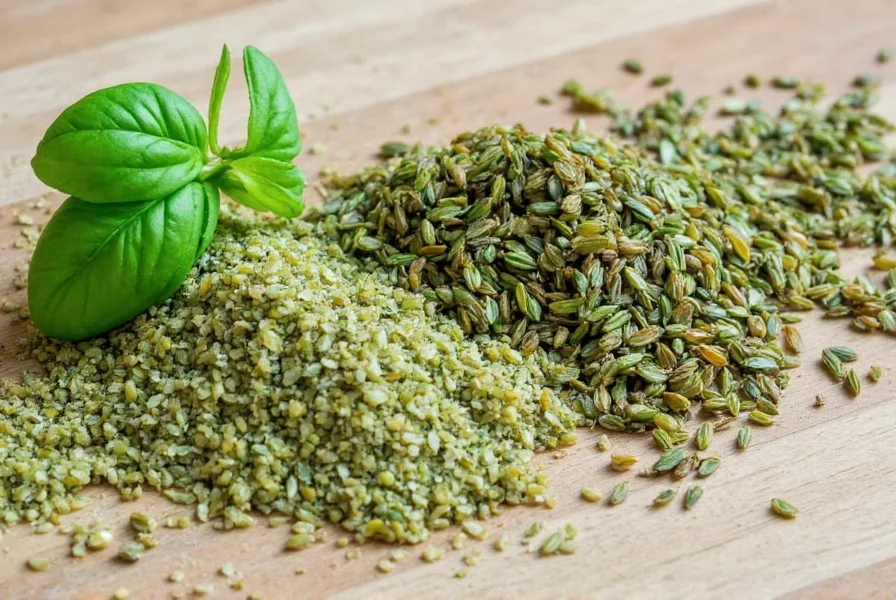If you've ever wondered how to distinguish between herbs and spices or which ones enhance your dishes best, you're in the right place. Welcome to the essential guide to herbs and spices — where understanding the difference unlocks endless flavor possibilities in your cooking.
This comprehensive blog covers everything from the core differences between herbs and spices to practical usage tips, storage methods, and expert pairing suggestions. Whether you're a beginner or an experienced cook, you'll find actionable advice to elevate your dishes with precision and confidence.

Table of Contents
- What Are Herbs and Spices?
- Common Herbs and Spices and Their Flavors
- When to Use Fresh vs Dried Herbs and Spices
- How to Store Herbs and Spices Like a Pro
- Buying Guide for Herbs and Spices
- Creative Uses Beyond the Pantry
- Frequently Asked Questions
- Conclusion
What Are Herbs and Spices?
Understanding the fundamental difference between herbs and spices is key to mastering flavor in cooking:
- Herbs come from the leafy, green parts of plants (e.g., basil, thyme, parsley, cilantro).
- Spices are derived from seeds (e.g., cumin), bark (e.g., cinnamon), roots (e.g., ginger), or other non-leafy parts of plants.
This distinction matters because herbs and spices behave differently in cooking: herbs are often delicate and added near the end of cooking, while spices are robust and benefit from longer heat exposure to release their full flavor.

Common Herbs and Spices and Their Flavors
Here's a detailed reference for the most essential herbs and spices, including their flavor profiles, ideal pairings, and pro tips:
| Category | Name | Flavor Profile | Best For | Tip |
|---|---|---|---|---|
| Herb | Basil | Sweet, peppery, slightly minty | Pesto, Italian sauces, Caprese salad | Add at the end for maximum flavor |
| Herb | Oregano | Earthy, bold, slightly bitter | Pizza, tomato-based dishes, grilled meats | Dried works better in long-cooking dishes |
| Herb | Thyme | Woody, lemony, earthy | Stews, roasted vegetables, soups | Goes well with mushrooms and poultry |
| Herb | Rosemary | Pine-like, fragrant, resinous | Roast lamb, potatoes, focaccia bread | Use sparingly; too much can be overwhelming |
| Herb | Parsley | Mild, fresh, slightly grassy | Garnish, tabbouleh, chimichurri | Flat-leaf has more flavor than curly |
| Herb | Cilantro | Citrusy, soapy (for some) | Mexican, Thai, Indian dishes | Fresh only — loses flavor when cooked |
| Spice | Cumin | Earthy, nutty, smoky | Tacos, chili, curries | Toast whole seeds before grinding for deeper flavor |
| Spice | Cinnamon | Warm, sweet, woody | Baking, oatmeal, mulled wine | Use ground cinnamon for baking; whole sticks for infusions |
| Spice | Paprika | Smoky, sweet, or hot (varies by type) | Spanish dishes, roasted vegetables, rubs | Smoked paprika adds depth to meats and stews |
| Spice | Ginger | Pungent, spicy, slightly sweet | Asian stir-fries, baked goods, teas | Fresh ginger has brighter flavor; dried is more concentrated |
| Spice | Black Pepper | Pungent, sharp, slightly floral | Universal seasoning for savory dishes | Grind fresh for maximum aroma |
When to Use Fresh vs Dried Herbs and Spices
The choice between fresh and dried depends on the ingredient type and cooking method:
- Fresh Herbs (e.g., basil, cilantro, parsley):
- Ideal for raw dishes (salads, salsas)
- Perfect as finishing touches (garnishes)
- Best for dishes with short cooking times
- Dried Herbs (e.g., oregano, thyme, rosemary):
- Best for slow-cooked dishes (stews, braises)
- Great for long-term storage
- Use when fresh isn't available
- Spices (e.g., cumin, cinnamon, paprika):
- Most commonly used dried for maximum shelf life and concentrated flavor
- Whole spices (e.g., cinnamon sticks, whole cumin seeds) can be toasted to enhance aroma before grinding
- Ground spices lose potency faster than whole; store in airtight containers
General rule: For herbs, use fresh for delicate flavors and dried for robust, long-cooking applications. For spices, dried is standard — whole spices offer superior freshness but require grinding.
How to Store Herbs and Spices Like a Pro
Proper storage preserves flavor and extends shelf life:
- Fresh Herbs: Wrap in damp paper towels and store in a sealed plastic bag in the fridge. Alternatively, place stems in water (like flowers) and cover loosely with a bag.
- Dried Herbs: Keep in airtight glass jars away from light, heat, and moisture. Label clearly to avoid confusion.
- Whole Spices: Store in airtight containers in a cool, dark place. Whole spices retain flavor longer than ground (up to 3-4 years).
- Ground Spices: Use within 6-12 months for peak potency. Check freshness by rubbing between fingers — if no aroma, replace.
- Freezing: Freeze fresh herbs like basil, parsley, or chives in oil or water for easy use in soups and sauces.

Buying Guide for Herbs and Spices
Choose quality ingredients with these tips:
| Product Type | Brand/Option | Key Features | Best For | Why Choose It |
|---|---|---|---|---|
| Herbs (Fresh) | Local Farmers' Market | Seasonal, pesticide-free, peak freshness | Salads, garnishes, quick-cooking dishes | Superior flavor and sustainability |
| Herbs (Dried) | McCormick Culinary | Consistent quality, chef-tested | Professional kitchens, high-volume cooking | Reliable flavor profile for consistent results |
| Spices (Whole) | Penzeys Spices | Premium quality, freshly ground | Flavor-forward recipes, gourmet cooking | Exceptional aroma and potency |
| Spices (Ground) | Simply Organic | Organic certified, non-GMO | Health-conscious cooking, everyday use | Ethical sourcing and clean ingredients |
| Spice Blends | Herbes de Provence | Mixed lavender, thyme, rosemary | Roasted vegetables, French cuisine | Convenient pre-mixed flavor profiles |
Creative Uses Beyond the Pantry
Expand your culinary creativity with these innovative ideas:
- Herb-Infused Oils: Steep rosemary or thyme in olive oil for gourmet drizzling or homemade gifts.
- Spice-Infused Salts: Mix sea salt with smoked paprika or cinnamon for versatile seasoning.
- Herbal Teas: Brew dried mint, chamomile, or lemongrass for soothing beverages.
- Spice Blends for Rubs: Combine cumin, coriander, and chili powder for perfect taco seasoning.
- Herb Ice Cubes: Freeze chopped herbs in broth or oil for instant flavor in soups and sauces.
- Spice-Infused Cocktails: Add a pinch of cardamom or star anise to cocktails for unique complexity.

Frequently Asked Questions About Herbs and Spices
What's the difference between herbs and spices?
Herbs come from the leafy green parts of plants (e.g., basil, thyme), while spices are derived from non-leafy parts like seeds (cumin), bark (cinnamon), or roots (ginger). This distinction affects how they're used in cooking — herbs are often delicate and added late, while spices are robust and benefit from longer heat exposure.
Which 12 herbs and spices should every kitchen have?
The essential 12 for any kitchen are: basil (herb), oregano (herb), thyme (herb), rosemary (herb), parsley (herb), cilantro (herb), mint (herb), cumin (spice), cinnamon (spice), paprika (spice), ginger (spice), and black pepper (spice). These cover a wide range of cuisines and cooking applications from savory to sweet.
What are the best flavor pairings for common herbs and spices?
Basil pairs with tomatoes and garlic; oregano enhances Mediterranean dishes; thyme complements poultry and root vegetables; rosemary works with lamb and potatoes; cumin is ideal for Mexican and Indian cuisines; cinnamon elevates baked goods; paprika adds depth to roasted meats; ginger brightens Asian stir-fries; and black pepper is universal for savory dishes. Always match intensity — delicate herbs like parsley for finishing, robust spices like cumin for slow cooking.
How do I know when to use fresh vs dried herbs and spices?
Use fresh herbs for raw dishes, garnishes, and quick-cooking recipes. Dried herbs work best in long-cooked dishes like stews. For spices, dried is standard — whole spices (e.g., cinnamon sticks) should be toasted before grinding for maximum flavor, while ground spices lose potency faster. As a rule: if a recipe simmers over 30 minutes, use dried herbs or ground spices; for finishing touches, use fresh herbs or whole spices.
How long do dried herbs and spices stay fresh?
Dried herbs maintain peak flavor for 1-2 years; ground spices for 6-12 months; whole spices for 3-4 years. Check freshness by rubbing between fingers — if no strong aroma, replace. Store in airtight containers away from light and heat to maximize shelf life.
Can I substitute dried herbs for fresh (and vice versa)?
Yes, but with adjustments. For herbs: 1 tablespoon fresh = 1 teaspoon dried. Add dried herbs early in cooking to release flavor; add fresh herbs at the end. For spices: dried is standard; whole spices should be ground before use. Never substitute fresh spices for dried — they're not interchangeable due to different moisture content and flavor profiles.
Conclusion
Herbs and spices are the backbone of great cooking — understanding their differences and proper use transforms simple ingredients into extraordinary dishes. Whether you're mastering fresh basil for a summer salad or toasting cumin for a rich curry, each element brings unique character to your food.
With this guide, you now have the knowledge to confidently select, store, and use herbs and spices like a professional. Experiment fearlessly, trust your palate, and let these flavors elevate every meal. Happy cooking!
Unlock the full potential of your kitchen with precision and creativity!










 浙公网安备
33010002000092号
浙公网安备
33010002000092号 浙B2-20120091-4
浙B2-20120091-4